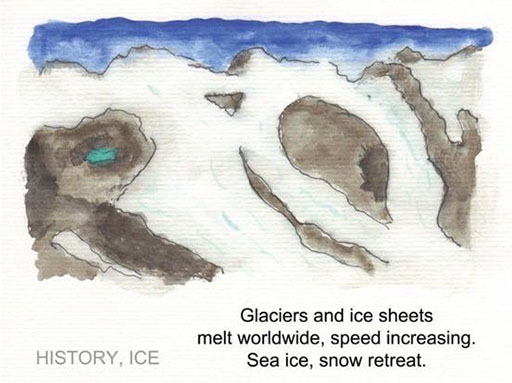3.3 Sea ice and snow
Much of Earth’s ice and snow is difficult for humans to access: ice caps on high mountains; vast, cold ice sheets on land, and creaking sea ice. So, we rely on measurements made by satellites to monitor what is happening.
Changes in ice and snow are important for climate change and geoengineering because:
- Ice and snow contribute to people’s livelihoods, water resources and culture.
- Some species depend on ice and snow for their habitat, breeding or feeding grounds.
Sea ice and snow cover affect how quickly the Earth responds to a change in energy budget, whether from human-caused climate change or geoengineering.
Read the following statements about sea ice and snow (IPCC, 2013), and answer the question below:
- Annual mean Arctic sea ice extent decreased over the period 1979–2012, by around 0.5 million kilometres squared (4%) per decade, and the summer minimum extent decreased by 0.7 to 1.1 million kilometres squared (around 9 to 14%) per decade.
- Annual mean Antarctic sea ice extent increased over the period 1979–2012, by around 0.1 to 0.2 million kilometres squared (1 to 2%) per decade. There are strong regional differences, with extent increasing in some regions and decreasing in others.
- The extent of Northern Hemisphere snow cover has decreased since the mid-twentieth century.
-
Which of the three statements is not included in the haiku?
-
The haiku ends ‘Sea ice, snow retreat’ but one of the statements shows that Antarctic sea ice is, on average, increasing in extent. Communication of science often simplifies results to tell an accessible story.
However, the decrease of sea ice in the Arctic is larger, and Antarctica shows a mixture of both increases and decreases in different locations, so the overall message of the haiku is still reasonable.

